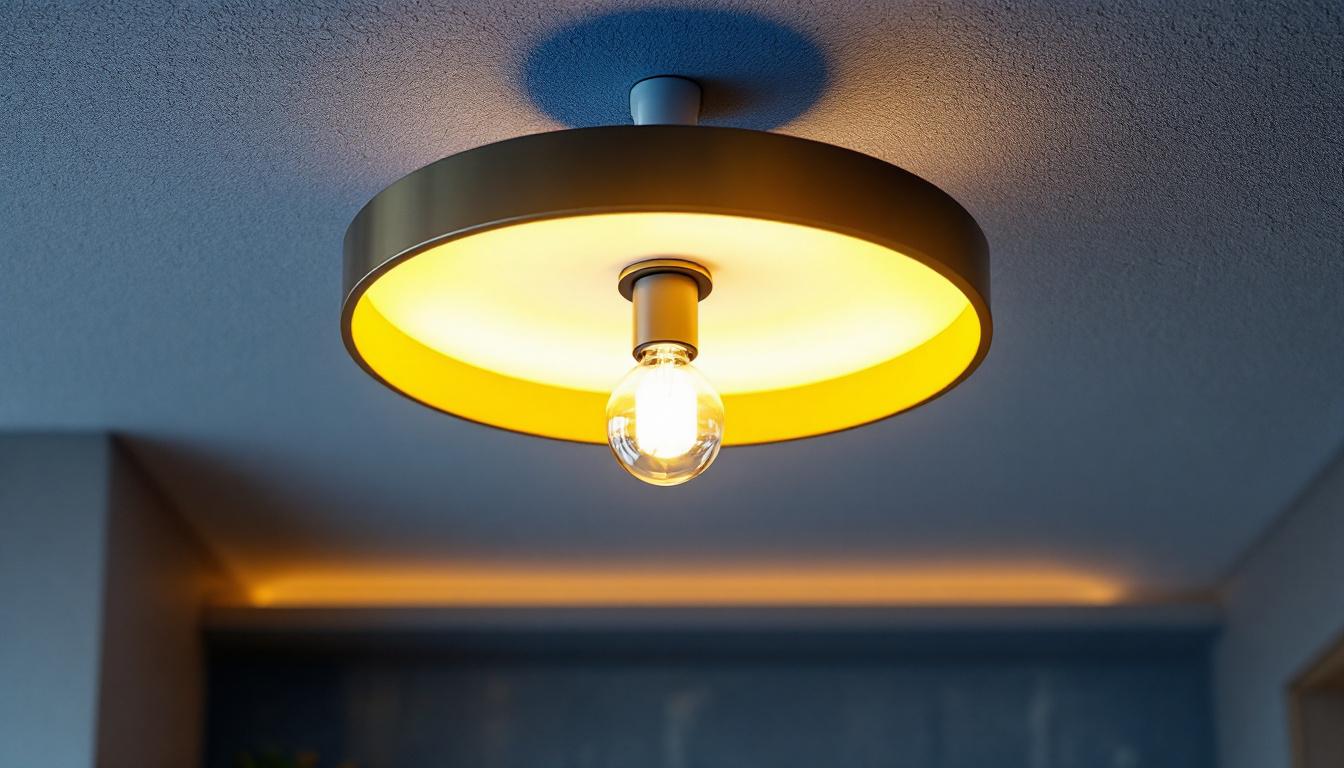
In the world of lighting design and installation, ceiling lighting fixtures play a pivotal role in enhancing the ambiance and functionality of spaces. However, even experienced lighting contractors can fall prey to common mistakes that can compromise the effectiveness of their installations. Understanding these pitfalls is essential for delivering quality work that meets client expectations. This article explores the most frequent errors made by lighting contractors when dealing with ceiling lighting fixtures and offers insights on how to avoid them.
One of the most significant mistakes lighting contractors make is diving into installation without adequate planning and design. A well-thought-out design is crucial for achieving the desired lighting effect and ensuring that the fixtures serve their intended purpose.
Before selecting ceiling lighting fixtures, it is essential to fully understand the space where they will be installed. Each room has unique characteristics, such as size, shape, and purpose, which influence lighting needs. For instance, a living room may require softer, ambient lighting, while a kitchen may need brighter, task-oriented illumination. Failing to assess these requirements can lead to poor lighting choices and unsatisfactory results. Additionally, factors such as the color of the walls, the type of furnishings, and even the amount of natural light that enters the space can significantly impact how lighting is perceived. A well-planned lighting scheme takes these elements into account, ensuring that the final result is not only functional but also aesthetically pleasing.
Another common oversight is neglecting to consider the functionality of the chosen fixtures. Different types of ceiling lights serve various purposes—some are designed for general illumination, while others focus on accent or task lighting. Contractors should ensure that the fixtures align with the intended use of the room. For example, using decorative fixtures in a workspace may not provide the necessary brightness for effective task performance. Furthermore, the integration of smart lighting technology can enhance the functionality of fixtures, allowing for customizable settings that adapt to different activities throughout the day. This flexibility can transform a single space into a multi-functional area, catering to everything from casual gatherings to focused work sessions.
Accurate calculations are fundamental in lighting design. Misjudging the required lumen output can lead to either overly bright or insufficiently lit spaces, both of which can detract from the overall aesthetic and functionality.
One of the most frequent miscalculations involves estimating the number of lumens needed for a given space. Overestimating can result in glaring, uncomfortable lighting, while underestimating can leave areas dim and uninviting. It is crucial to consider factors such as room size, wall colors, and the presence of natural light when determining the appropriate lumen output.
Layered lighting, which combines ambient, task, and accent lighting, is essential for creating a well-balanced illumination scheme. Contractors often make the mistake of relying solely on ceiling fixtures for lighting, overlooking the importance of additional layers. By integrating various lighting sources, contractors can enhance the functionality and aesthetic appeal of a space.
The placement of ceiling lighting fixtures can significantly impact the overall effectiveness of the lighting design. Incorrectly positioned fixtures can lead to uneven illumination and create unwanted shadows.
Contractors must consider the room’s layout when determining fixture placement. For instance, in a dining area, fixtures should be centered above the table to provide adequate lighting for meals. Failing to account for furniture placement and room usage can result in lighting that does not meet the needs of the occupants.
Another common mistake is neglecting the height at which fixtures are installed. Ceiling height plays a crucial role in determining how light is distributed throughout a space. Fixtures installed too low may obstruct views or create an oppressive atmosphere, while those placed too high may fail to provide adequate illumination. Proper height considerations are vital for achieving optimal lighting performance.
With a plethora of ceiling lighting options available, selecting the right type of fixture can be challenging. However, choosing the wrong fixture can lead to dissatisfaction and ineffective lighting.
Contractors often overlook the importance of aligning fixtures with the overall design aesthetic of a space. A modern fixture may clash with a traditional interior, while a rustic light may not suit a contemporary environment. It is essential to consider the design style of the room and select fixtures that complement the overall theme.
In today’s environmentally conscious world, energy efficiency is a critical factor in lighting design. Contractors may inadvertently choose fixtures that consume excessive energy, leading to higher utility bills and a negative environmental impact. Opting for energy-efficient lighting solutions, such as LED fixtures, can provide long-term savings and align with sustainable practices.
Electrical considerations are paramount in any lighting installation. Inadequate wiring can lead to safety hazards and malfunctioning fixtures, which can tarnish a contractor’s reputation.
One common mistake is overloading electrical circuits by connecting too many fixtures to a single circuit. This can lead to tripped breakers, flickering lights, and potential fire hazards. Contractors should ensure that the electrical system can handle the load of the installed fixtures and adhere to local electrical codes.
Dimming capabilities can enhance the versatility of ceiling lighting fixtures, allowing occupants to adjust brightness according to their needs. However, contractors may overlook the importance of integrating dimmer switches into their designs. Providing clients with the option to control lighting levels can significantly improve their overall satisfaction with the installation.
Maintenance is an often-overlooked aspect of lighting design. Fixtures that are difficult to access for cleaning or bulb replacement can lead to long-term dissatisfaction for clients.
Some ceiling fixtures require frequent maintenance, such as cleaning or bulb replacement. Contractors should consider the long-term maintenance requirements of the chosen fixtures and discuss these with clients. Selecting fixtures that are easy to maintain can enhance the longevity and performance of the lighting system.
In addition to maintenance needs, accessibility is a crucial factor. Fixtures installed in hard-to-reach locations can pose challenges when it comes to replacing bulbs or performing repairs. Contractors should ensure that fixtures are positioned in a way that allows for easy access, promoting convenience for clients.
Compliance with local building codes and regulations is essential for any lighting installation. Ignoring these guidelines can lead to legal issues and potential safety hazards.
Each locality has specific codes governing electrical installations, including lighting. Contractors must familiarize themselves with these regulations to ensure that their work meets safety standards. Failure to comply can result in costly fines and the need for rework, ultimately damaging a contractor’s reputation.
In many cases, lighting installations require permits to ensure compliance with local regulations. Contractors should be proactive in obtaining the necessary permits before commencing work. This not only ensures legal compliance but also demonstrates professionalism to clients.
Effective communication with clients is vital throughout the lighting installation process. Contractors who underestimate this aspect may find themselves facing misunderstandings and dissatisfaction.
From the initial consultation to project completion, setting clear expectations is crucial. Contractors should discuss design options, timelines, and budget considerations with clients to ensure everyone is on the same page. This transparency helps prevent misunderstandings and fosters a positive working relationship.
Throughout the installation process, soliciting client feedback can provide valuable insights. Contractors should encourage clients to share their preferences and concerns, allowing for adjustments to be made as needed. This collaborative approach can enhance client satisfaction and lead to successful project outcomes.
In an age where technology plays an integral role in everyday life, lighting contractors must embrace technological advancements to enhance their installations.
Smart lighting systems offer a range of benefits, including remote control, scheduling, and energy monitoring. Contractors who overlook the integration of smart technology may miss out on opportunities to provide clients with enhanced convenience and energy efficiency. Understanding the latest smart lighting solutions can set a contractor apart in a competitive market.
Design software can streamline the planning process and help contractors visualize lighting designs before installation. By utilizing these tools, contractors can create more accurate and appealing designs, ultimately leading to better client satisfaction. Investing time in learning design software can significantly enhance a contractor’s capabilities.
Once the installation is complete, many contractors may neglect to follow up with clients. This oversight can lead to missed opportunities for feedback and potential future work.
Providing post-installation support demonstrates a commitment to client satisfaction. Contractors should check in with clients to ensure that they are satisfied with the lighting and address any concerns that may arise. This proactive approach can foster long-term relationships and encourage referrals.
As technology continues to evolve, clients may be interested in upgrading their lighting systems in the future. Contractors should keep clients informed about new products and advancements that may enhance their lighting experience. This ongoing communication can lead to repeat business and a positive reputation in the industry.
Lighting contractors play a crucial role in shaping the ambiance and functionality of spaces through ceiling lighting fixtures. By recognizing and addressing common mistakes, contractors can enhance their installations and provide clients with exceptional results. From careful planning and design to effective communication and post-installation support, attention to detail is essential for success in the lighting industry. Embracing best practices not only improves client satisfaction but also fosters a positive reputation that can lead to future opportunities.
Don’t let common mistakes dim the potential of your lighting installations. At LumenWholesale, we provide lighting contractors with the resources to excel. Our extensive range of spec-grade lighting products ensures you have access to the highest quality options for any project. With unbeatable wholesale prices and the convenience of free shipping on bulk orders, you can trust that you’re getting the best value without any hidden costs. Elevate your lighting game and give your clients the exceptional results they deserve. Discover the perfect fusion of quality, affordability, and convenience at Wholesale Lighting at the Best Value.

Discover the key insights that clients anticipate lighting contractors to possess about LED sign lighting.

Discover effective strategies and proven methods for lighting contractors to optimize switch timers for lights.

Discover essential tips and common pitfalls to avoid in light switching with this comprehensive guide for lighting contractors.

Discover how canless LED lights are revolutionizing the lighting industry for contractors.